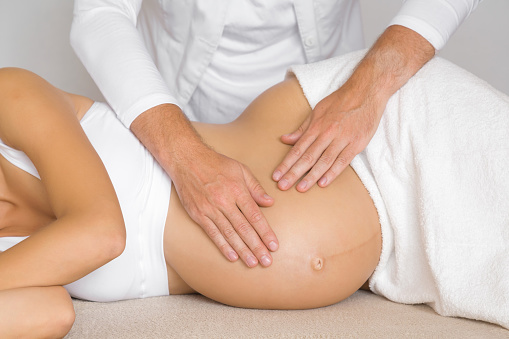Pregnancy is a wondrous journey marked by joy and expectation, yet it often entails stress and discomfort. The gift of a prenatal massage near me, skillfully administered by a certified professional, provides a sanctuary for expectant mothers to alleviate these challenges. This specialized massage offers a unique blend of soothing touch and gentle techniques tailored to the pregnant body’s needs, easing muscle tension, reducing swelling, and promoting overall relaxation.
Beyond the physical benefits, it nurtures mental tranquility, fostering a sense of calm amidst the whirlwind of pregnancy. The therapy embraces the spirit of self-care, allowing the mother-to-be to embrace this transformative period with a refreshed mind and body, enhancing the beauty of this remarkable journey.
The Science Behind Prenatal Massage
Don’t mistake prenatal massage as just another spa treatment. Studies have proven that it’s an essential aspect of prenatal care. Opting for a prenatal massage can offer many health benefits, not only for the mother but also for the baby. The advantages are manifold, from reducing the risk of premature births to easing labor pains. However, if you’re contemplating this therapy, knowing its unique characteristics is essential.
Prenatal Massage vs. Regular Massage: Key Differences
Understanding the distinction between a regular and prenatal massage is crucial for expectant mothers. Here are the primary differences:
- Positioning during the Massage: Clients typically lie on their front or back in conventional massages like Swedish or Shiatsu. However, during a prenatal massage, the mother-to-be is usually positioned on her side to ensure the baby’s safety.
- Equipment and Support: Massage therapists might employ specialized tools to enhance the comfort of pregnant clients. For example, some massage tables are designed with cut-outs for the belly, letting the client lie face-down. In other cases, bolsters and props might be used to ensure a comfortable experience.
- Target Areas: Pregnancy can cause specific discomforts, particularly in the later stages. A prenatal massage near me emphasizes relieving tension in areas like the lower back and feet, which are common pain points for pregnant women.
Although many recommend prenatal massages in the third trimester, starting earlier can amplify the potential therapeutic effects.
When to Opt for Prenatal Over Traditional Massage?
Even in the early stages of pregnancy, when the physical changes might not be apparent, choosing prenatal over standard massages is advised.
When scheduling an appointment, inform the massage therapist of your pregnancy. A trained therapist will know the areas to concentrate on and which areas to be cautious with, such as the abdomen, ensuring a tailored experience to suit pregnancy’s unique demands.
Some women might find prenatal massages suitable in the first trimester, while others might be advised against it. Before booking a session, consult your healthcare provider, like a doctor or midwife.
Conclusion
Contrary to certain misconceptions, prenatal massage is a safe and effective means to alleviate pregnancy’s physical and emotional strains. Beyond merely providing relief from discomfort, it serves as an educational tool for pregnant women, enlightening them about the intricate physiological shifts occurring within their bodies during this transformative period. By skillfully targeting specific areas of discomfort, such as the lower back or swollen ankles, a certified prenatal massage therapist employs gentle techniques that enhance circulation, reduce muscle tension, and promote relaxation. Moreover, the massage experience fosters a deep understanding of the evolving body, equipping mothers-to-be with valuable insights on navigating and adapting to these changes, empowering them to embrace the pregnancy journey with confidence and grace.

